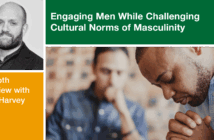It is increasingly common for churches to hire their own members. Ann Michel of the Lewis Center suggests we need to consider how congregations and the church members in their employ can best navigate what is admittedly a gray area with potential risks and rewards for both employee and employer.
I often hear people say, “A church should never hire its own members.” Yet research I conducted a few years ago on staffing patterns in United Methodist churches found that congregations are increasingly ignoring this adage. Overall 60 percent of lay church staff are hired from within and another 10 to 25 percent joined the congregations where they work once on the job.
A church member working for the church can be a win-win situation if both parties approach it with honesty, objectivity, and a sincere commitment to work through the ambiguities.
Why is this? Not only has the number of lay church workers grown dramatically over the past several decades, but there has also been a shift in the kind of work they do. In past generations, if a church needed a secretary, custodian, or bookkeeper, they often looked beyond their congregation for employees to perform discrete tasks considered apart from the ministry of the church. But now, more lay staff work in various programmatic ministries, and congregations want someone who understands their spiritual DNA and has the relationships necessary to get things done.
I should probably state for the record that I worked for my church for the better part of a decade. For me, taking on a professional ministry role was an affirmation of my gifts, an opportunity to explore my calling, and a way to be more deeply involved in the church’s mission. As I’ve studied this phenomenon more broadly, I’ve learned just how many churches are thriving through the efforts of homegrown staff. And I’ve come to see the growing number of church members stepping into more significant ministry roles as an act of the Spirit to renew the church.
Simply continuing to insist that churches should never hire their members seems out of step with current reality. Instead, we need to ask how congregations and the church members in their employ can navigate what is admittedly still a gray area with potential risks and rewards for both employee and employer.
Hire for the right reasons
When hiring anyone — member or non-member — a congregation needs to hire the right person for the right reasons. Church personnel problems are often rooted in a tendency to see hiring and employee management issues through the lens of congregational care instead of objective workplace logic. Many churches hire or refuse to fire someone because they worry about the person being out of work. They fail to hold employees accountable because they don’t want to hurt someone’s feelings or don’t have the necessary personnel systems and skills. Congregations and their staffs need to understand that the relationship between employer and employee is fundamentally different than the covenant of church membership. This is especially true — and needs to be emphasized from the start — when a church hires a member.
Knowing which hat to wear
Members who work for their churches must learn to balance the dual roles of congregant and staff member. If their supervisor is also their pastor, he or she must learn to balance the roles of spiritual guide and boss. But negotiating more than one set of roles and responsibilities is part of life. In my family, I am parent and child, wife and mother, sister, niece, and so on. In my workplace, I am supervisor to some, subordinate to others. Setting aside the question of employment, in most churches it’s not only common but essential that people wear more than one hat. Anyone balancing different roles learns what’s expected in each and how to behave accordingly.
It’s important to clarify at what times and in what situations an employee is wearing the hat of a church staffer and when they are wearing the hat of a church member. Is attending congregational meetings, events, and worship a part of the job, or something done on one’s own time? Will a church member on the payroll have voice and vote in church decision making? Are they eligible to be nominated to lay leadership positions? Different congregations handle these matters in different ways. But gaining clarity around these questions can avoid role ambiguity and tensions.
A clear job description is an invaluable tool in navigating this terrain. Yet, for a variety of reasons, far too many church workers labor without one. If someone is working without a job description, think of those critical junctures when it’s logical to clarify roles and responsibilities — in the context of a performance evaluation, when there’s transition on a staff team, or when a new pastor arrives.
Professional and spiritual development
Church staff often come into their roles with professional experience in other fields, but little formal training in theology or the finer points of church leadership. Typically, they do not have the kind of training that clergy receive in handling pastoral concerns, professional boundaries, and sexual ethics. It behooves both congregations and their staffs to give adequate attention to the spiritual growth and professional development of church employees and to take seriously their responsibility for continuing education and growth.
A church member working for the church can be a win-win situation if both parties approach it with honesty, objectivity, and a sincere commitment to work through the ambiguities — essential traits in any productive employee-employer relationship.
Ann Michel has written more extensively on the concerns and needs of church staff in Synergy: A Leadership Guide for Church Staff and Volunteers available at Cokesbury and Amazon.
Related Resources
- Synergy: A Leadership Guide for Church Staff and Volunteers by Ann A. Michel
- Strengthening the Ministry of Lay Staff by Ann A. Michel
- Lay Staff Ministry in the United Methodist Church by Ann A. Michel






